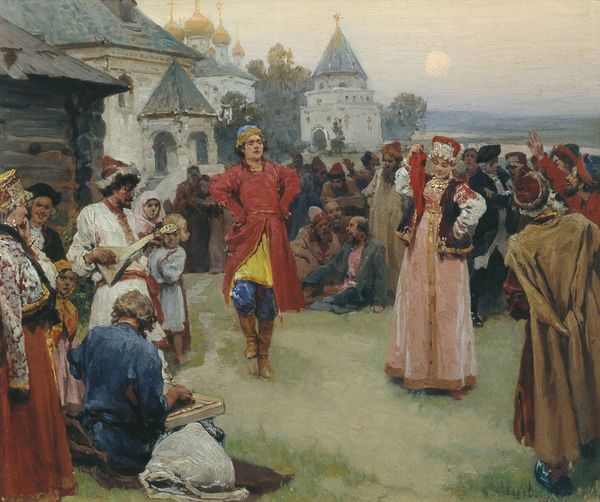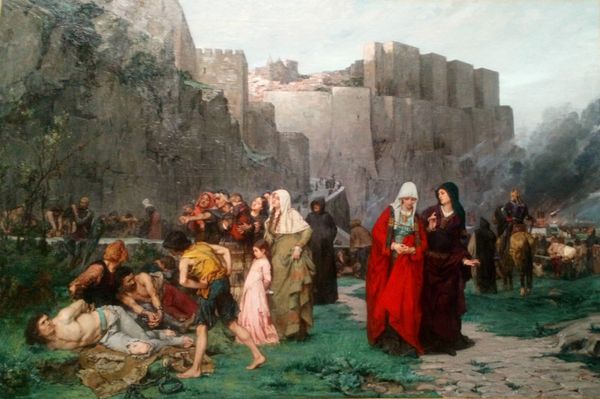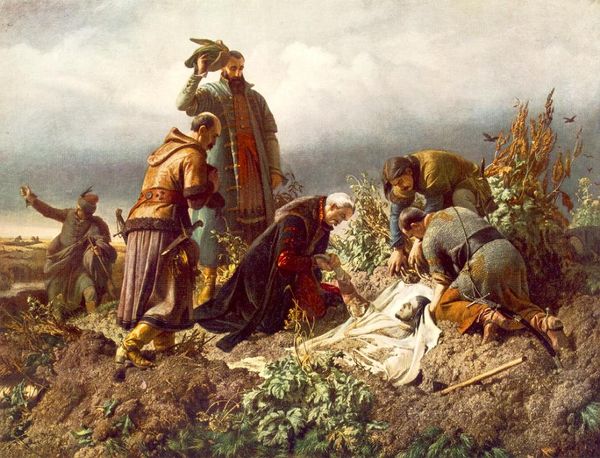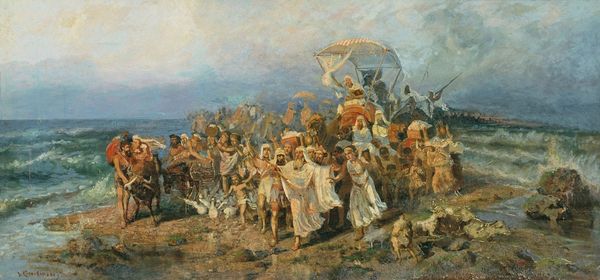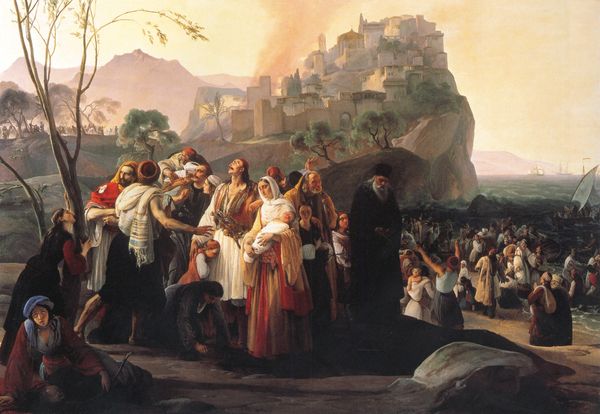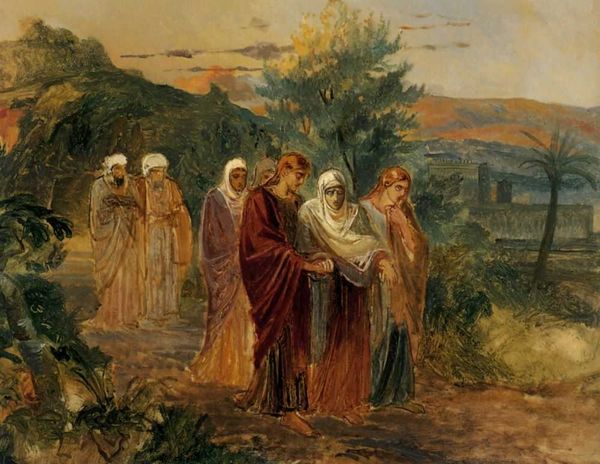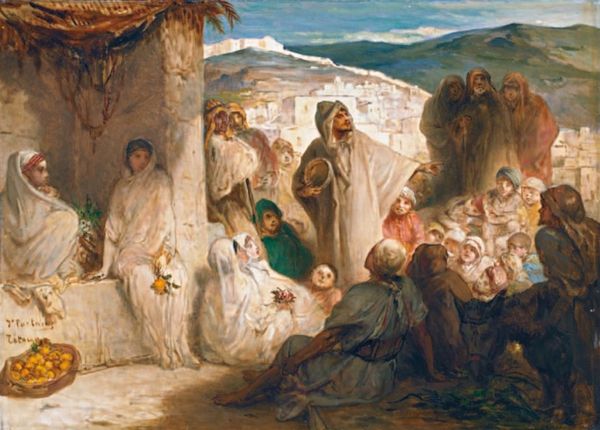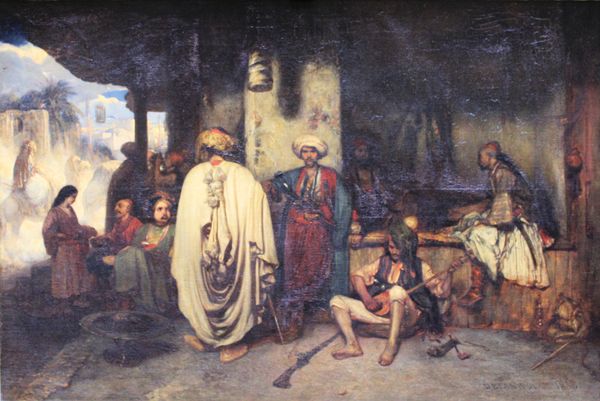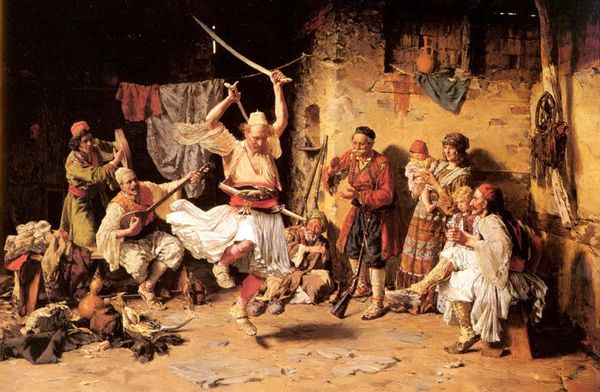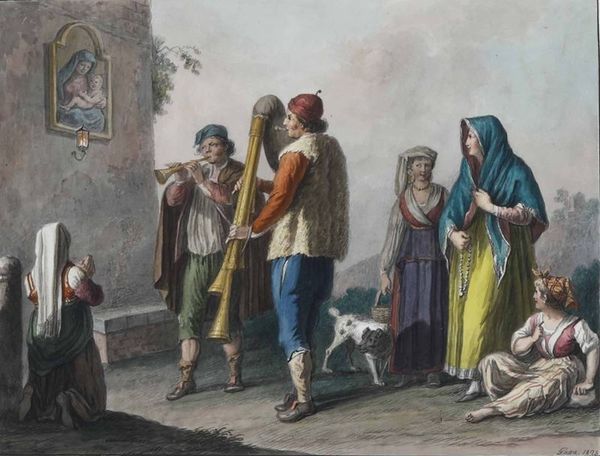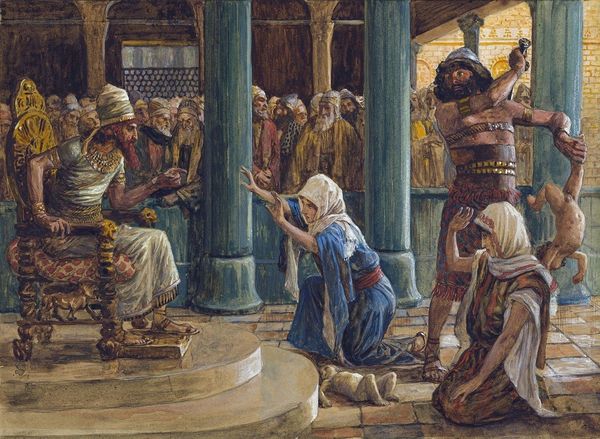
watercolor
#
gouache
#
oil painting
#
watercolor
#
russian-avant-garde
#
watercolour illustration
#
genre-painting
#
history-painting
#
mixed media
#
watercolor
Copyright: Public domain
Curator: This is Klavdy Lebedev’s "The Development of New Lands by Russian," created in 1904, using watercolor as its primary medium. What strikes you initially? Editor: There’s an almost palpable tension. The muted watercolor palette and bustling scene contrast strangely. The overall tone feels solemn, yet there’s something undeniably performative about it. Curator: Lebedev was deeply involved in representations of Russian history, often focusing on moments of perceived national importance and idealizing leadership figures. Considering its historical context, it’s important to see it in conversation with Russian nationalism at the turn of the 20th century. Editor: Precisely. I see a very clear link with discourses of land ownership and authority being established over indigenous populations. Notice how power is centralized; figures with distinctive headgear, costumes, are front and center, actively gesturing outwards. What strikes me is the theatricality embedded in it all, as if a play being performed. Curator: That theatricality served a purpose, especially when considering the sociopolitical climate. Representations of rulers like the one in red reinforced the idea of benevolent leadership, masking more complex histories. Think of the systemic land grabs and displacement inflicted on native communities that became ingrained in the imperial drive of Russia in this era. Editor: Yes, and the painting’s soft rendering normalizes the events. Look how other people in the picture almost disappear into the scenery while some are visibly concerned as an elder comforts them in a vulnerable position. A melancholic shadow almost haunts the group, a reminder of their pending plight. Curator: I would add that the composition draws our eyes strategically. Our attention is immediately brought towards those with regalia. This further amplifies a narrative of "rightful" expansion that obscures the voices and lived realities of those whose lands were being appropriated. Editor: So, while visually appealing with its watercolor softness, "The Development of New Lands by Russian" also serves as a stark reminder of how art can be used as propaganda to push power structures. It urges us to actively question the underlying political agendas within seemingly objective historical paintings. Curator: Precisely. It also emphasizes how historical narratives should be approached with constant contextual awareness and that artwork should make us pause to consider how dominant ideologies operate and inform social biases that may have trickled down to our own time. Editor: Agreed. Lebedev's watercolor is far more than a picture; it is a call to dissect power and remember the unheard voices.
Comments
No comments
Be the first to comment and join the conversation on the ultimate creative platform.
